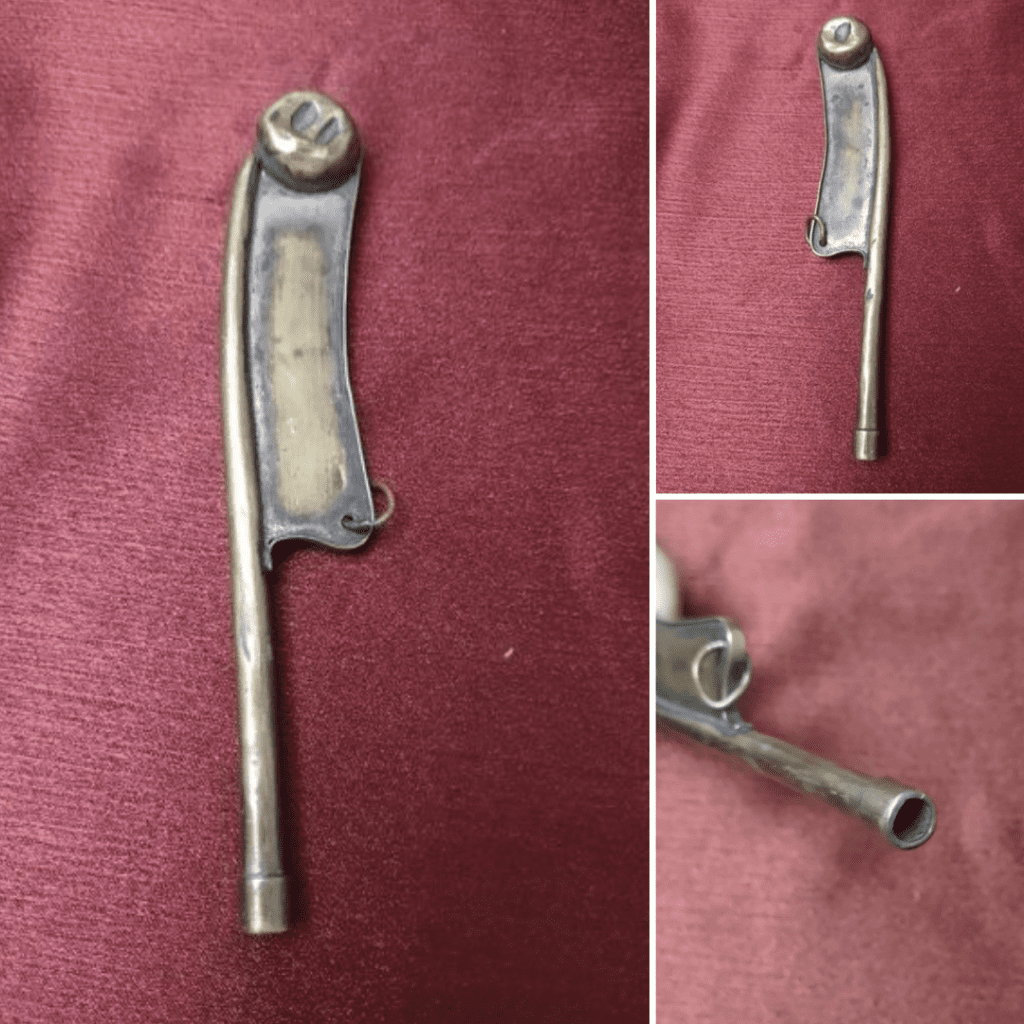
Picture yourself on the wooden deck of an old navy ship, with hair wet from the sea and the sea air blowing through it. The sound of the waves hitting the ship’s hull creates a rhythmic backdrop, and in the midst of the working sailors, a short, sharp, and melodious whistle pierces the air.
This is the boatswain’s call, a small yet powerful tool that has been an integral part of naval history for centuries.
The boatswain’s call, also known as the bosun’s whistle, has a rich history dating back to 1485 when it was first used as an emblem of rank for the Lord High Admiral of England.

This small, non-diaphragm type whistle consists of several parts, including a narrow tube called the gun, a spherical metal piece called the buoy, and a flat metal piece called the keel, which holds the call together. The shackle, a part that links the call to a long chain, is worn around the neck in ceremonial uniforms.
The boatswain’s call has been widely used as a communication device on naval ships, especially when giving orders. Before the advent of modern means of communication, the whistle’s shrill sound could easily be heard over the noise of the water and the chaos on the deck. This proved to be extremely useful during rainy conditions or in any situation where there was a lot of background noise.
The boatswain’s call was not merely a whistle to give commands; it was a way of passing life-saving information that had to be obeyed to the letter.

The boatswain’s call is not just a relic of the past, preserved in maritime museums. It is an emblem of the golden era of seamanship, when navigation was a craft and an art form.





